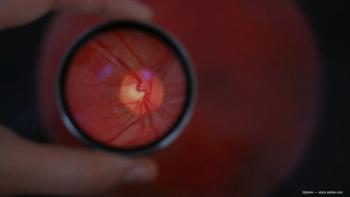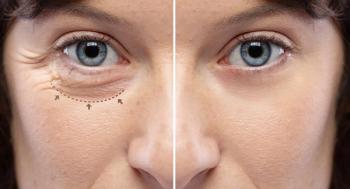
Real-world experience: Positive DME treatment outcomes observed with FAc implant at UK centre
Dr Mushtaq discusses one centre’s initial post-marketing experience with the fluocinolone acetonide intravitreal implant 0.19 mg. The implant demonstrated favourable outcomes and good patient acceptance.
Take-home message: Dr Mushtaq discusses one centre’s initial post-marketing experience with the fluocinolone acetonide intravitreal implant 0.19 mg. The implant demonstrated favourable outcomes and good patient acceptance.
By Cheryl Guttman Krader, Reviewed by Dr Bushra Mushtaq, FRCS
Initial post-marketing experience with the fluocinolone acetonide intravitreal implant 0.19 mg (
Study details
Over a period of about 9 months, the implant has been used to treat DME in 23 eyes of 18 patients presenting to the medical retina department at Birmingham and Midlands Eye Centre, Birmingham, UK.
“All patients had failed prior therapy and had very chronic, advanced macular changes associated with DME duration of 2 to 7 years,” said Dr Mushtaq.
Follow-up examinations, which ranged from 1 week to 9 months, showed a mean subfoveal thickness decrease from 513 μm pre-implantation to 376 μm post-implantation. Near complete drying of the macula was achieved in 11 eyes. Six eyes still had significant DME, but follow-up was still relatively early for some of those cases (range, 5 days to 2 months). Visual acuity (VA) improved as well in most eyes that were followed for 6 weeks or longer, with some eyes gaining up to 4 Snellen lines. Only 3 eyes had no improvement on optical coherence tomography (OCT) or in VA.
“The 3 eyes that did not achieve flattening of the macula had very chronic DME and had failed prior treatment with laser,
“Moreover, all of the patients have been very happy because of the fact that the long-acting fluocinolone implant allows for a reduced visit burden,” she said.
Instead of having to return for treatment monthly, patients who receive the fluocinolone acetonide implant are scheduled for follow-up visits every 3 months after initially being seen at 1 to 2 weeks and then 6 to 8 weeks post-implantation, explained Dr Mushtaq.
Anatomical and functional gains following implantation
Dr Mushtaq observed that anatomic and functional improvements occurred rapidly after the implantation procedure. Most patients demonstrated marked improvements within just 2 weeks and further benefit at 6 weeks.
“Based on my experience so far, it seems that if there is no benefit by 6 weeks, improvement is unlikely to occur with longer follow-up,” she said.
So far, the only post-implantation adverse event has been elevated IOP in one eye (28 mmHg), which has been controlled with topical medication.
Although Dr Mushtaq first began using the fluocinolone implant as a last-resort option for patients with advanced, refractory DME, as she gained confidence, its use was expanded to include eyes with better macular structural integrity and visual prognosis as well as for patients who had failed only laser therapy and expressed a desire to avoid monthly anti-VEGF injections. In addition, she became comfortable using the implant bilaterally.
Dr Mushtaq noted that follow-up for safety evaluations will continue for the eyes that did not benefit from treatment. Since safety has been favourable so far, she has no plans to remove those devices.
Dr Bushra Mushtaq
Dr Mushtaq is Consultant Ophthalmologist and Director of medical retina services at Birmingham and Midlands Eye Centre, Birmingham, UK.
Dr Mushtaq has received travel grants from Alimera Sciences, but has no other relevant financial interests to disclose.
Newsletter
Don’t miss out—get Ophthalmology Times updates on the latest clinical advancements and expert interviews, straight to your inbox.









































